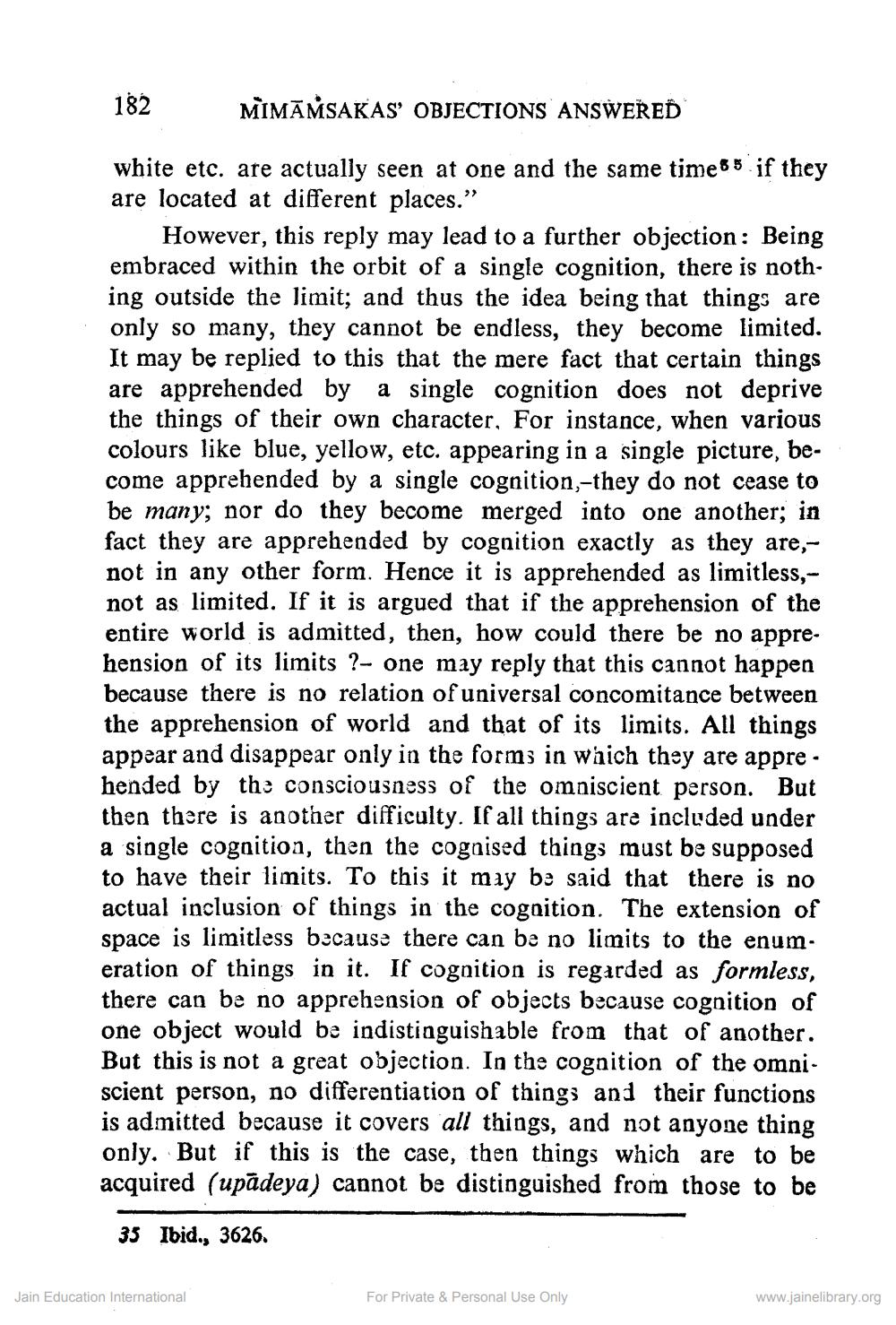________________
182
MIMĀŃSAKAS OBJECTIONS ANSWERED
white etc. are actually seen at one and the same time88. if they are located at different places."
However, this reply may lead to a further objection: Being embraced within the orbit of a single cognition, there is nothing outside the limit; and thus the idea being that things are only so many, they cannot be endless, they become limited. It may be replied to this that the mere fact that certain things are apprehended by a single cognition does not deprive the things of their own character, For instance, when various colours like blue, yellow, etc. appearing in a single picture, become apprehended by a single cognition, they do not cease to be many; nor do they become merged into one another; in fact they are apprehended by cognition exactly as they are,not in any other form. Hence it is apprehended as limitless,not as limited. If it is argued that if the apprehension of the entire world is admitted, then, how could there be no appre. hension of its limits ?- one may reply that this cannot happen because there is no relation of universal concomitance between the apprehension of world and that of its limits. All things appear and disappear only in the forms in which they are apprehended by the consciousness of the omniscient person. But then there is another difficulty. If all things are included under a single cognition, then the cognised things must be supposed to have their limits. To this it may be said that there is no actual inclusion of things in the cognition. The extension of space is limitless because there can be no limits to the enumeration of things in it. If cognition is regarded as formless, there can be no apprehension of objects because cognition of one object would be indistinguishable from that of another. But this is not a great objection. In the cognition of the omniscient person, no differentiation of things and their functions is admitted because it covers all things, and not anyone thing only. But if this is the case, then things which are to be acquired (upādeya) cannot be distinguished from those to be
35
Ibid., 3626.
Jain Education International
For Private & Personal Use Only
www.jainelibrary.org




